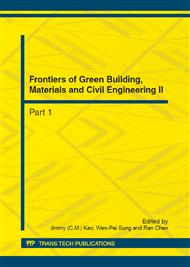p.26
p.30
p.34
p.40
p.45
p.51
p.57
p.62
p.66
Developing a Healthy, Comfortable and Energy-Saving Office Building
Abstract:
How to maintain a comfortable indoor environment without excessively relying on mechanical HVAC (Heating, Ventilation, and Air Conditioning) is a target to be pursued for future living requirements. The results obtained in this research show that in an office environment, the room temperature monitored during winter is close to the comfortable temperature; however, the office occupants feel that a little warmer indoor temperature is comfort. During summer, the occupants prefer cooler temperature than the comfort temperature. Additionally, Taiwan is located in sub-tropical region with hot and humid summer. Even if the room temperature is maintained in a comfortable range, the occupants still feel not so comfortable because of high humidity. Hence, reducing the room temperature below 23 °C is inferred to make occupants feel comfortable. Questionnaire survey indicates that ventilation is preferred by 30.9% of the respondents for summer and 43.3% for winter as an effective method to improve the stuffy indoor air.
Info:
Periodical:
Pages:
45-50
Citation:
Online since:
August 2012
Authors:
Keywords:
Price:
Сopyright:
© 2012 Trans Tech Publications Ltd. All Rights Reserved
Share:
Citation:


